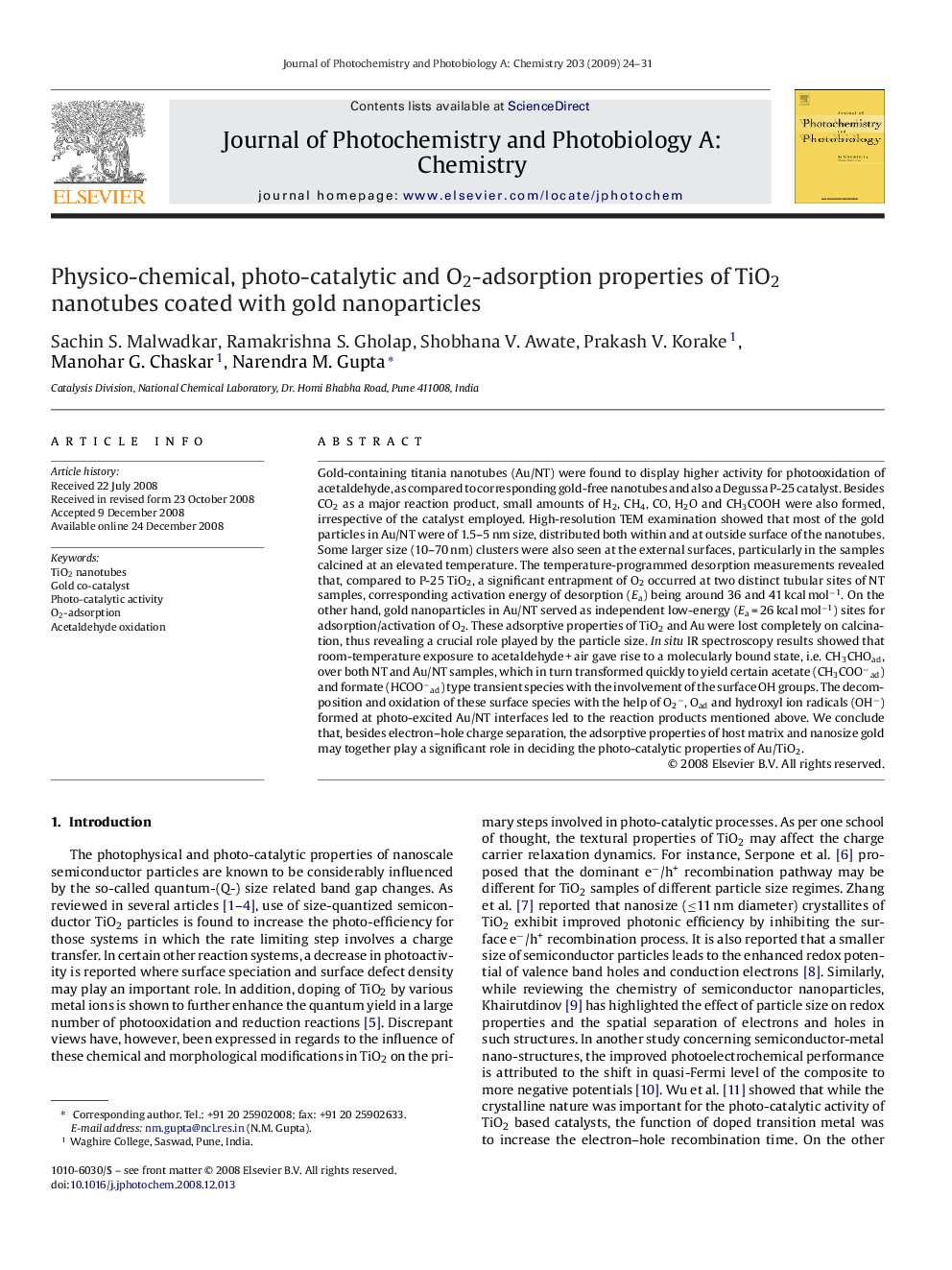| کد مقاله | کد نشریه | سال انتشار | مقاله انگلیسی | نسخه تمام متن |
|---|---|---|---|---|
| 27847 | 44046 | 2009 | 8 صفحه PDF | دانلود رایگان |

Gold-containing titania nanotubes (Au/NT) were found to display higher activity for photooxidation of acetaldehyde, as compared to corresponding gold-free nanotubes and also a Degussa P-25 catalyst. Besides CO2 as a major reaction product, small amounts of H2, CH4, CO, H2O and CH3COOH were also formed, irrespective of the catalyst employed. High-resolution TEM examination showed that most of the gold particles in Au/NT were of 1.5–5 nm size, distributed both within and at outside surface of the nanotubes. Some larger size (10–70 nm) clusters were also seen at the external surfaces, particularly in the samples calcined at an elevated temperature. The temperature-programmed desorption measurements revealed that, compared to P-25 TiO2, a significant entrapment of O2 occurred at two distinct tubular sites of NT samples, corresponding activation energy of desorption (Ea) being around 36 and 41 kcal mol−1. On the other hand, gold nanoparticles in Au/NT served as independent low-energy (Ea = 26 kcal mol−1) sites for adsorption/activation of O2. These adsorptive properties of TiO2 and Au were lost completely on calcination, thus revealing a crucial role played by the particle size. In situ IR spectroscopy results showed that room-temperature exposure to acetaldehyde + air gave rise to a molecularly bound state, i.e. CH3CHOad, over both NT and Au/NT samples, which in turn transformed quickly to yield certain acetate (CH3COO−ad) and formate (HCOO−ad) type transient species with the involvement of the surface OH groups. The decomposition and oxidation of these surface species with the help of O2−, Oad and hydroxyl ion radicals (OH−) formed at photo-excited Au/NT interfaces led to the reaction products mentioned above. We conclude that, besides electron–hole charge separation, the adsorptive properties of host matrix and nanosize gold may together play a significant role in deciding the photo-catalytic properties of Au/TiO2.
Journal: Journal of Photochemistry and Photobiology A: Chemistry - Volume 203, Issue 1, 5 March 2009, Pages 24–31